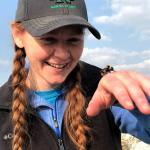If you were to ask a grassland to list a few of their iconic species, you’d likely hear about the bison and pronghorn, but I have a feeling they’d also speak about the smaller creatures who typically go unseen. What comes to mind are the dung beetles who tirelessly recycle nutrients, caterpillars who fulfill the diet of countless bird species, and wild bees who work around the clock to maintain the vast diversity of flowering plants.
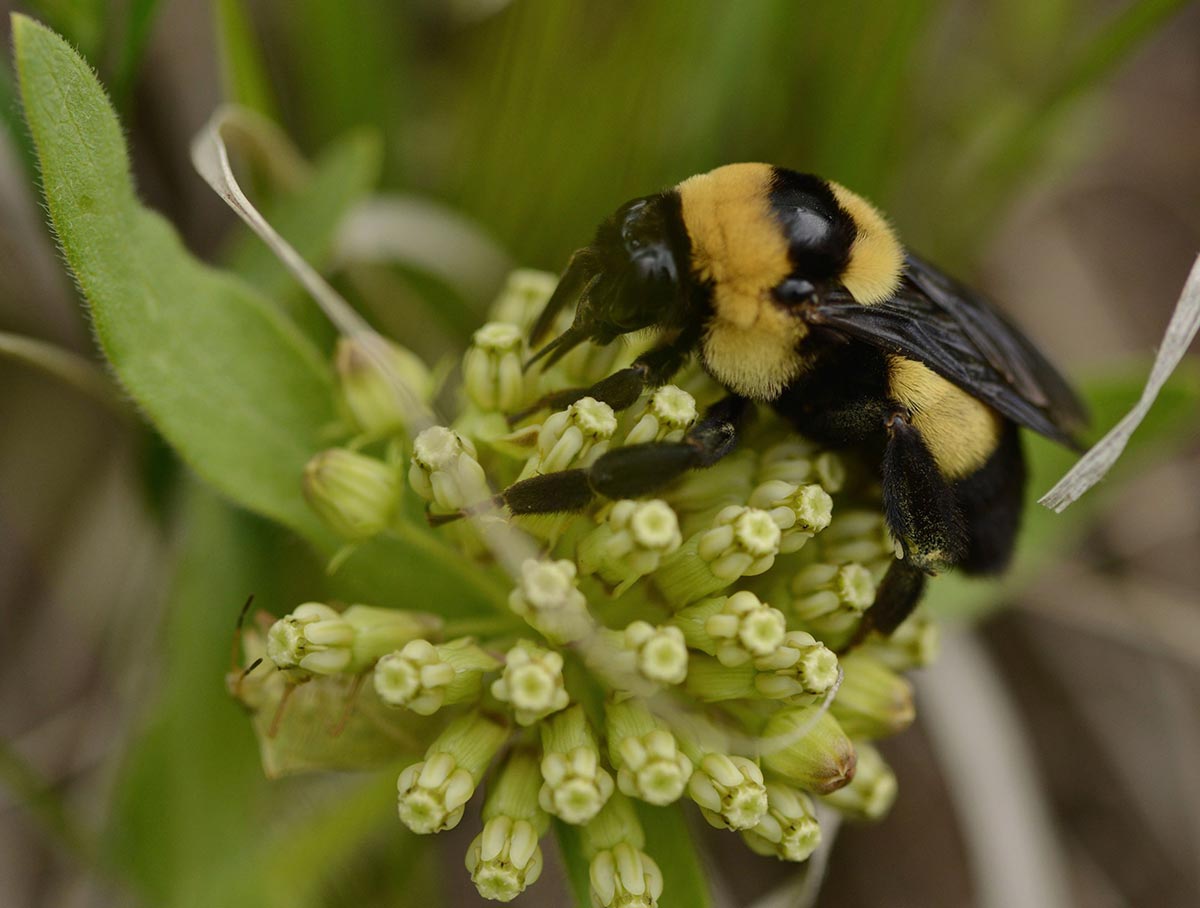
One species in particular that a grassland calls to mind is the Southern Plains bumble bee (Bombus fraternus). This striking black and yellow pollinator occupies grasslands and urban areas east of the Rockies, ranging from the Dakotas south to Gulf Coast. The queens of this robust species measure in at just over an inch and have a very neat appearance with uniformly short hair covering their body.
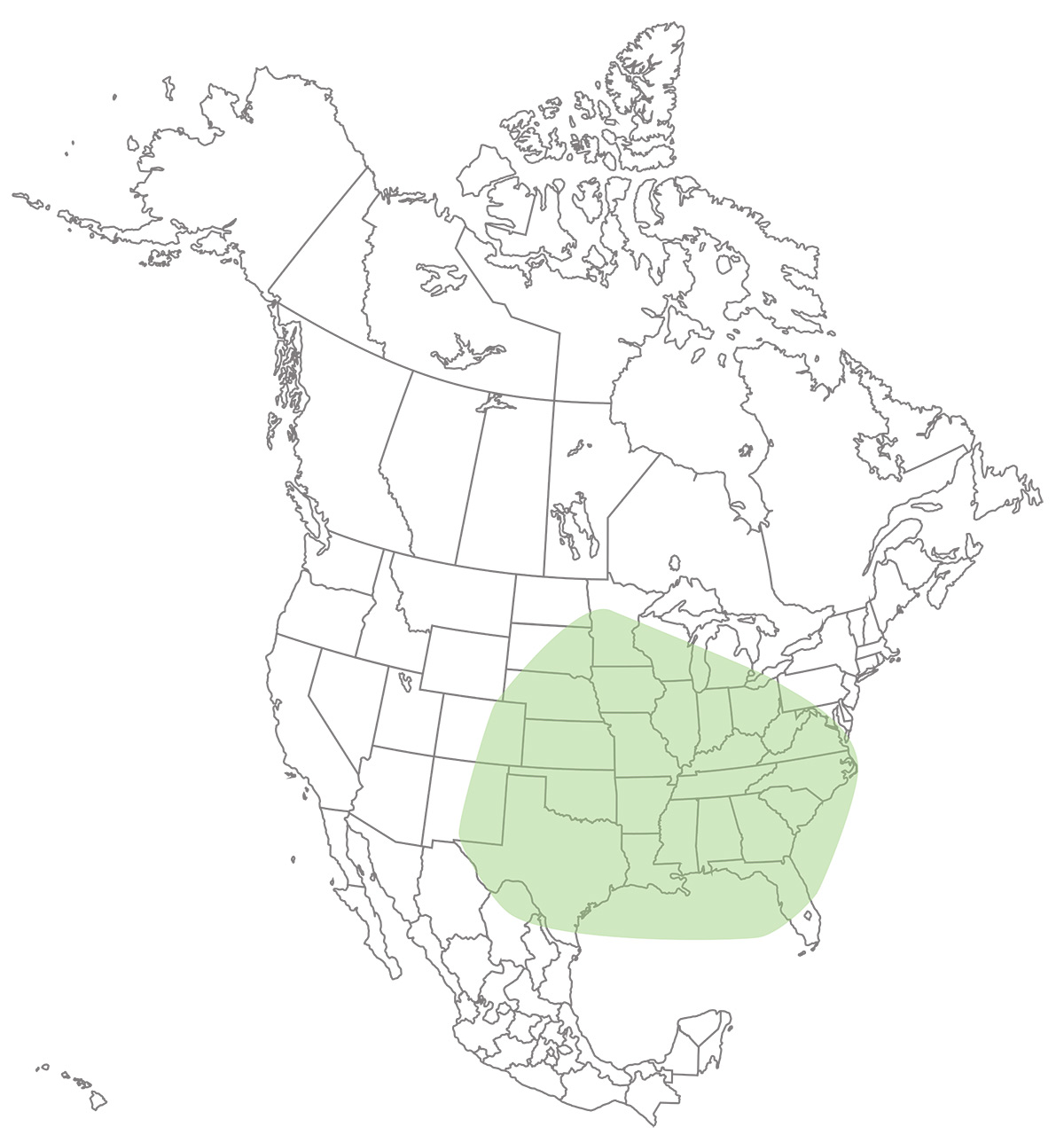
During the summer months, the Southern Plains bumble bee can be found pollinating many kinds of flowering plants—including bee balm, tall thistle, blazing star, and milkweed—though in much lower numbers than it used to.
Southern Plains bumble bee is considered for Endangered Species Act protection
Recently, the U.S. Fish and Wildlife Service confirmed that the Southern Plains bumble bee is being considered for federal protection under the U.S. Endangered Species Act (ESA). This comes as a result of a petition submitted in July of 2022 stating that the Southern Plains bumble bee is at risk of extinction.
While there are many potential factors contributing to this bumble bee’s decline—disease, pathogens, parasites, spread of invasive species, competition with managed species, climate change—the largest ones are likely habitat loss and pesticide use.
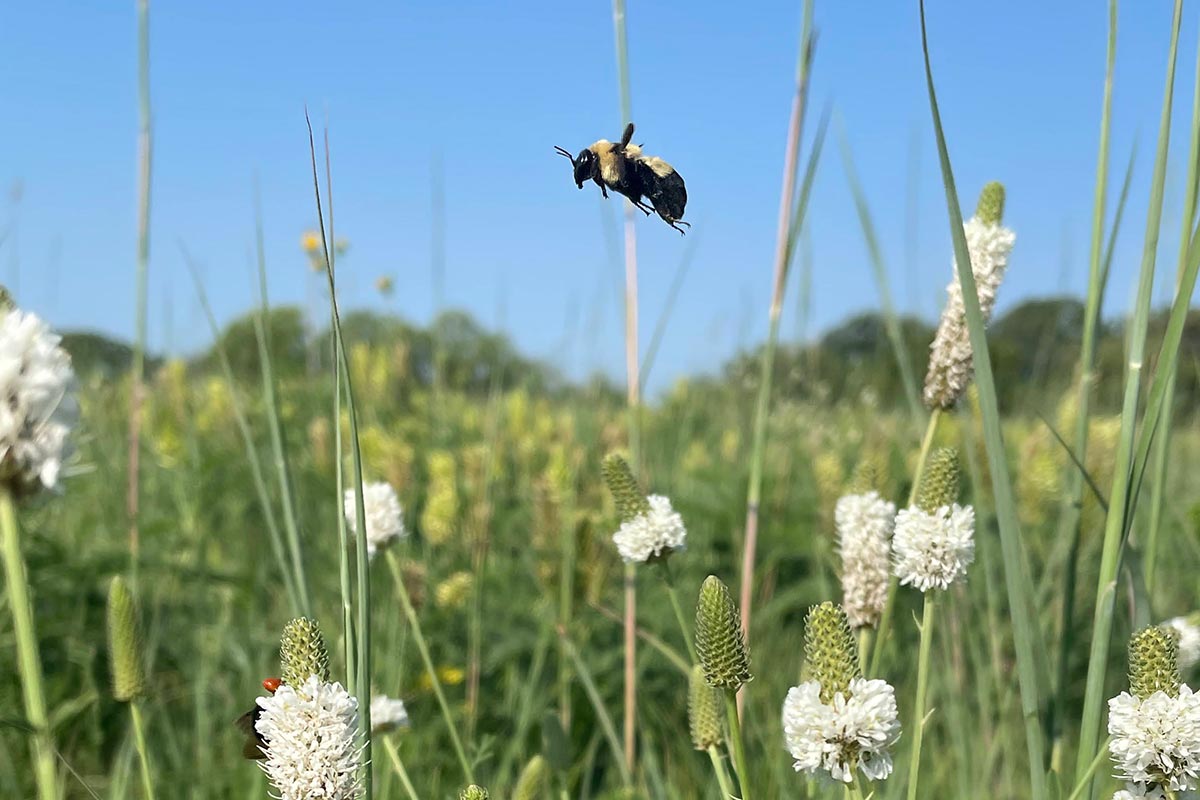
So now it is up to the Fish and Wildlife Service to review the status of the Southern Plains bumble bee, look at everything we know about this bee, and make a formal decision as to whether or not it warrants federal protection. While this may seem like dismal news, yet another species experiencing decline, it is good news that the this grassland bee is receiving this level of conservation attention.
The Endangered Species Act was set up to protect plants and animals that are at risk of extinction and implement recovery plans to alter their declining trajectory. Should the Southern Plains bumble bee get listed as endangered, it would trigger a multi-state, collaborative process of devising a conservation plan to support the species, and likely bring about additional research to better understand what this animal needs to persist. Ultimately, the goal of listing a species is to strategize a way to delist the species, which means finding a way to help the population reach a state of stability, or ideally, demonstrating an increasing trend.
To help save the species, volunteers can join Bumble Bee Atlas
While the Fish and Wildlife Service is assessing the status of the Southern Plains bumble bee, each of us can take part in learning more about this bumble bee and contributing to its conservation.
People all over the Great Plains and Midwest have been helping researchers better understand the Southern Plains bumble bee by participating in the Bumble Bee Atlas, a program of the Xerces Society and our partners. The Atlas is a community science effort that tracks and conserves bumble bees, currently spanning twenty states.
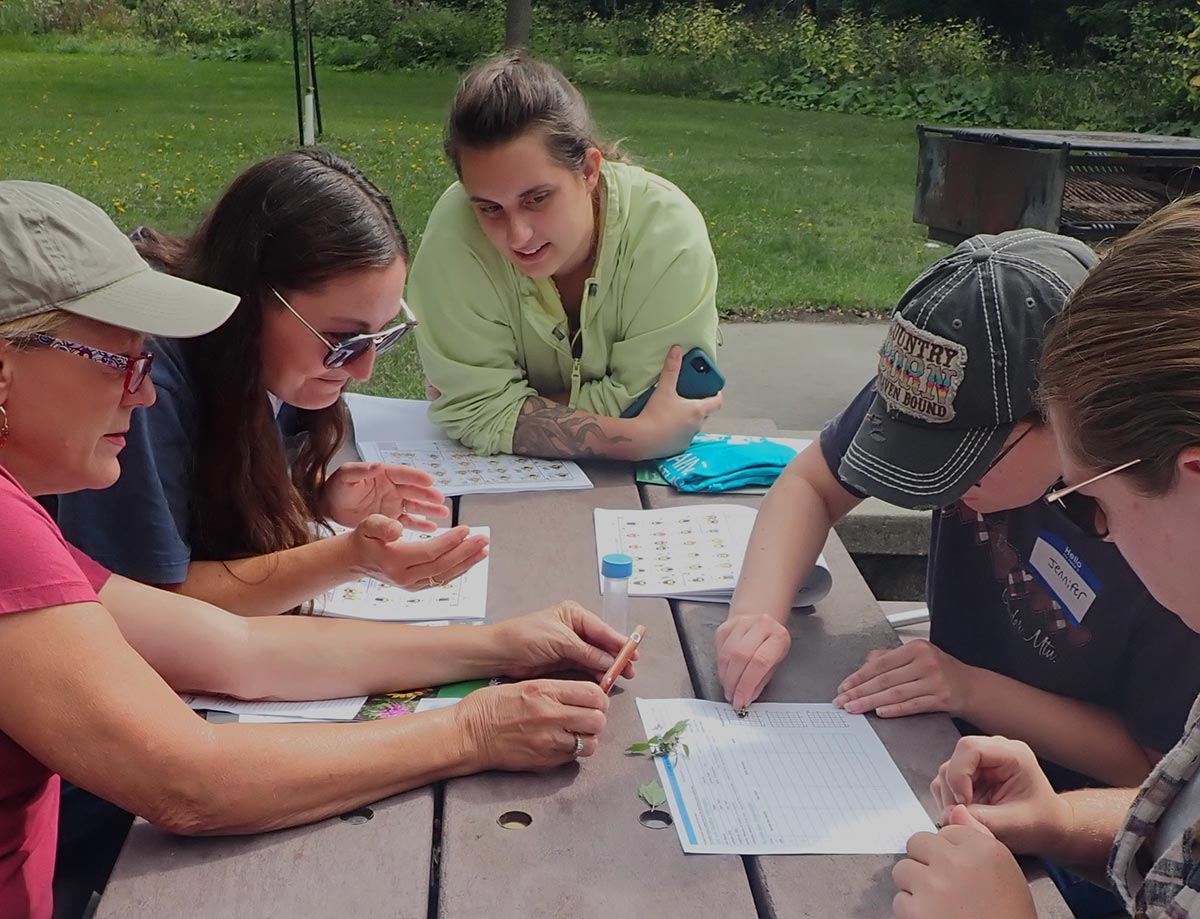
Each community scientist that decides to participate receives training on the importance of pollinators and an inside look at the world of bumble bees—their behavior and ecology, the threats they face, conservation efforts, and regional species identification—before learning how to help us monitor bumble bees.
While monitoring, community scientists photo-document the bumble bees they observe using catch-and-release methods, record flowering plants to the best of their ability, and assess the habitat around them as guided by our simple form, taking note of bumble bee nesting features and the presence of habitat management practices (i.e. prescribed fire, grazing, haying). The reported data provides a current picture of where this animal occurs and are used to make conservation recommendations.
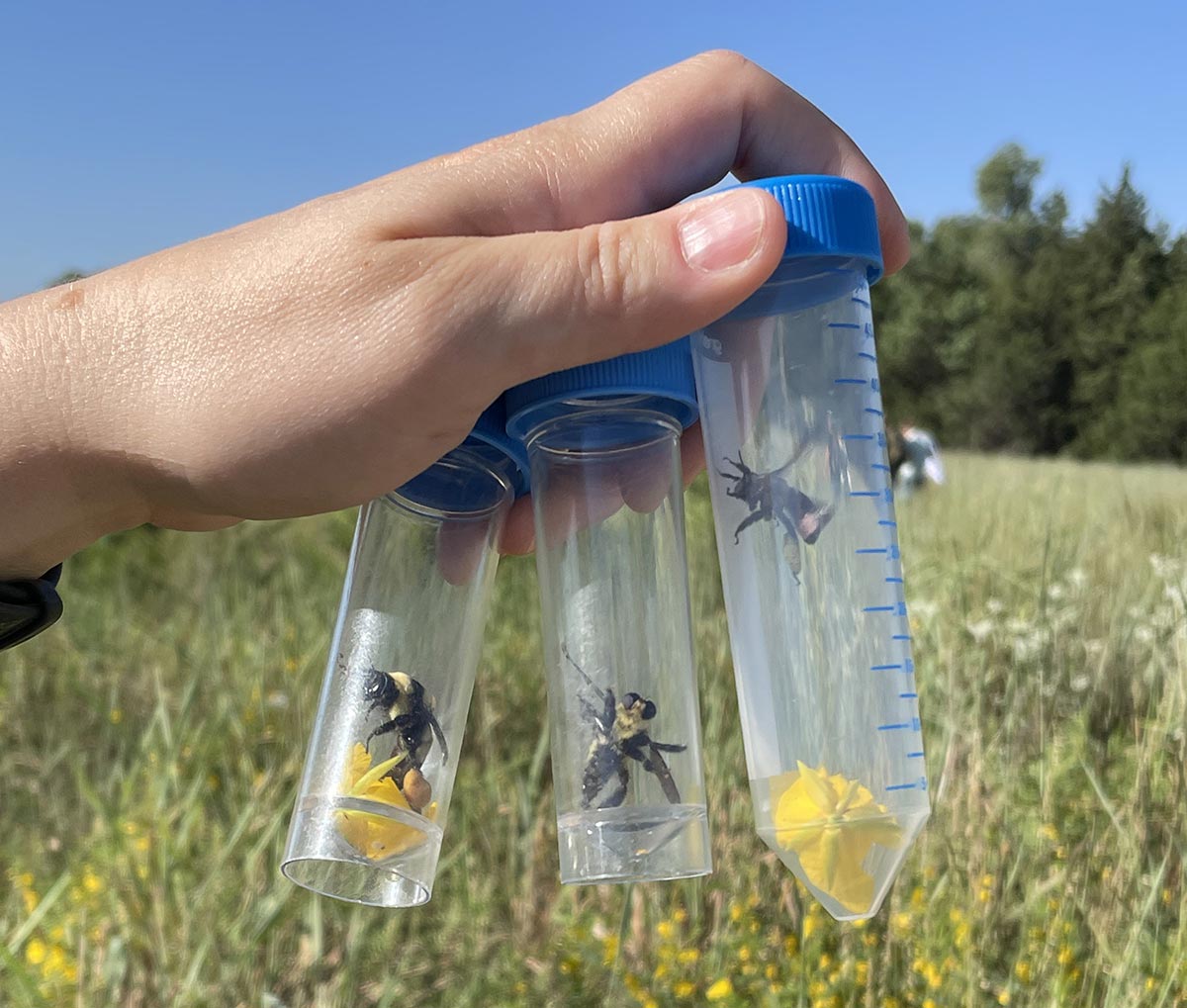
In the case of the Southern Plains bumble bee, the data will be utilized by the Fish and Wildlife Service as they assess the species. For example, the Atlas data will provide the Service with a strong, modern dataset that can be used alongside historical data to assess changes in the species’ distribution, its abundance on the landscape now compared to the past, aid in assessing the severity of a declining species in a declining habitat, and much more.
Community scientists are truly making a difference for the future of bumble bees by participating in the Bumble Bee Atlas. Take action this coming summer by learning more about the Southern Plains bumble bee and what can be done to halt its decline. Our first online training event is coming up in April and we welcome your involvement.
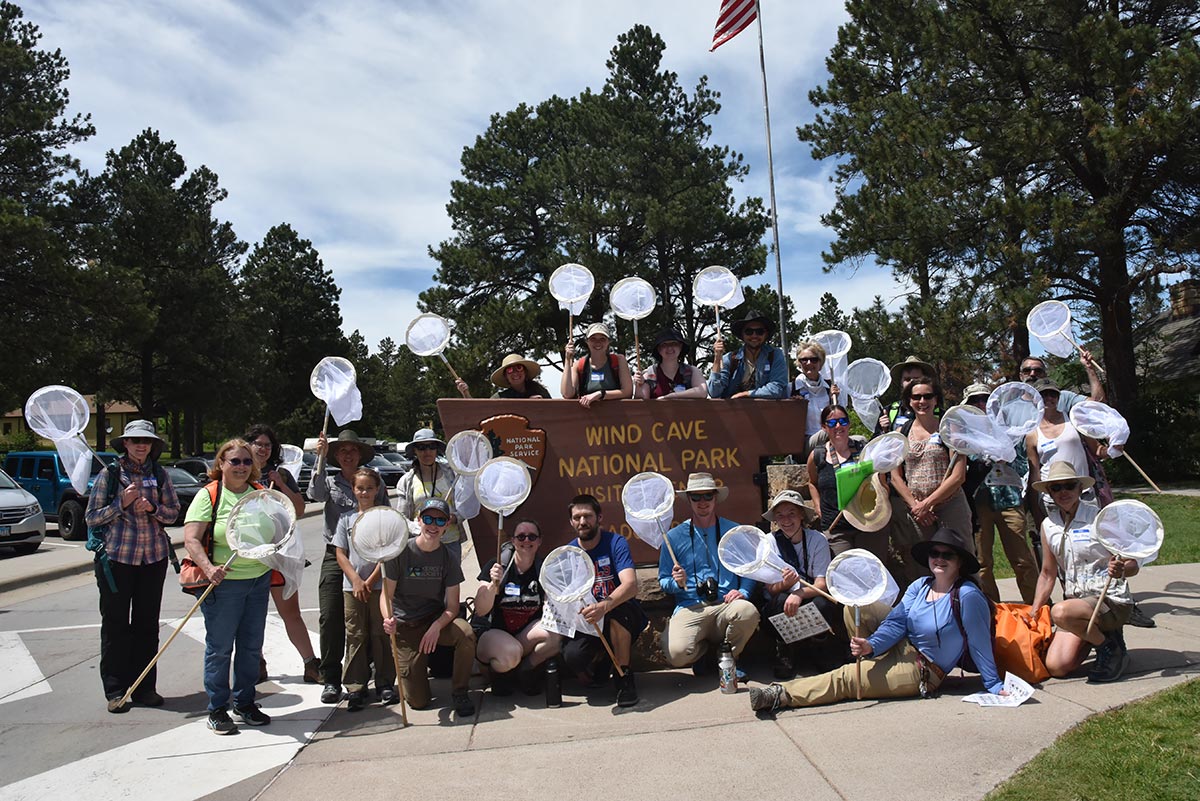
Learn more about the Bumble Bee Atlas

